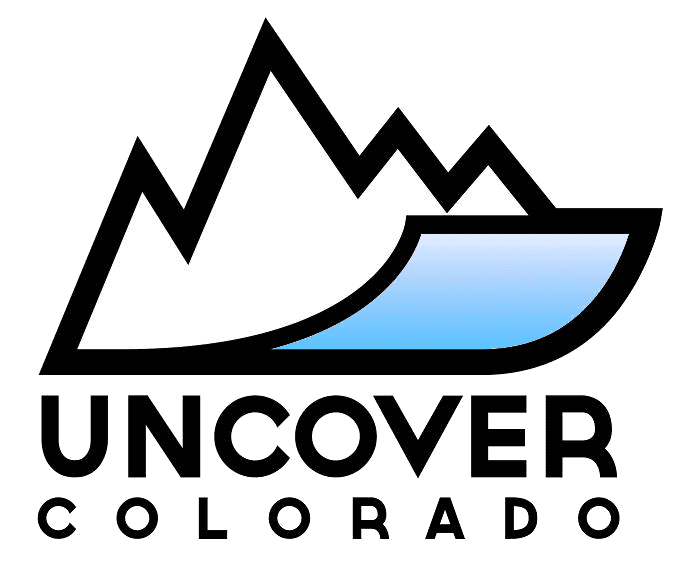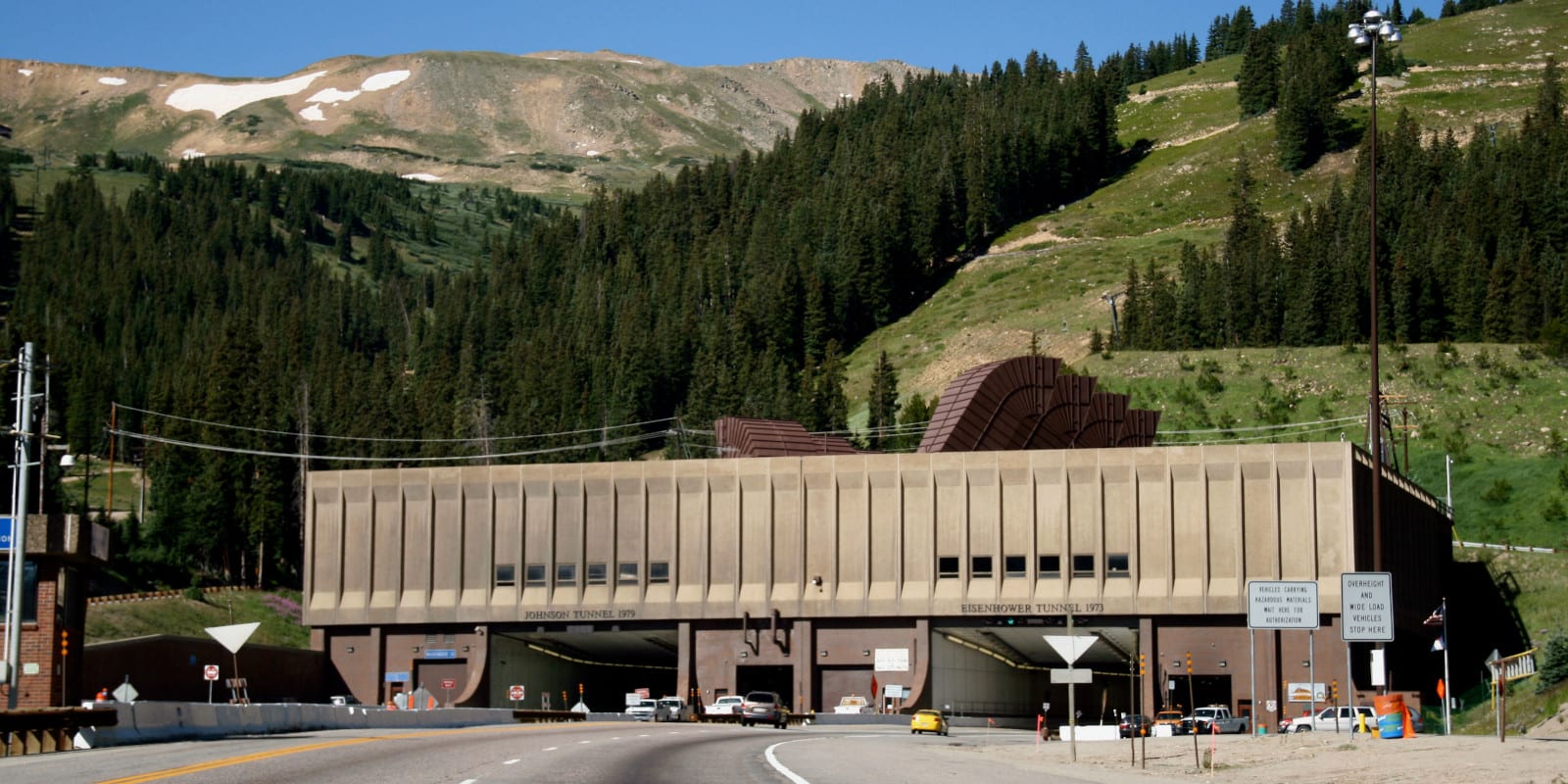Running through the Continental Divide in the Rocky Mountains, the Eisenhower–Edwin C. Johnson Memorial Tunnel is among the highest car tunnels in the world, reaching 11,158 feet at its highest elevation. It is also the longest mountain tunnel and marks the highest elevation of the Interstate Highway System.
The dual-tunnel, four-lane tunnel is located on Interstate 70 (I-70) within the Arapaho National Forest (under it) approximately 60 miles west of Denver. The westbound/Eisenhower tunnel opened in 1973 at a length of 1.693 miles. Th eastbound/Johnson tunnel opened in 1979 at a length of 1.697 miles. The tunnel separates Clear Creek County to the east and the Atlantic Ocean watershed, with the Summit County to the west and the Pacific Ocean watershed.
History
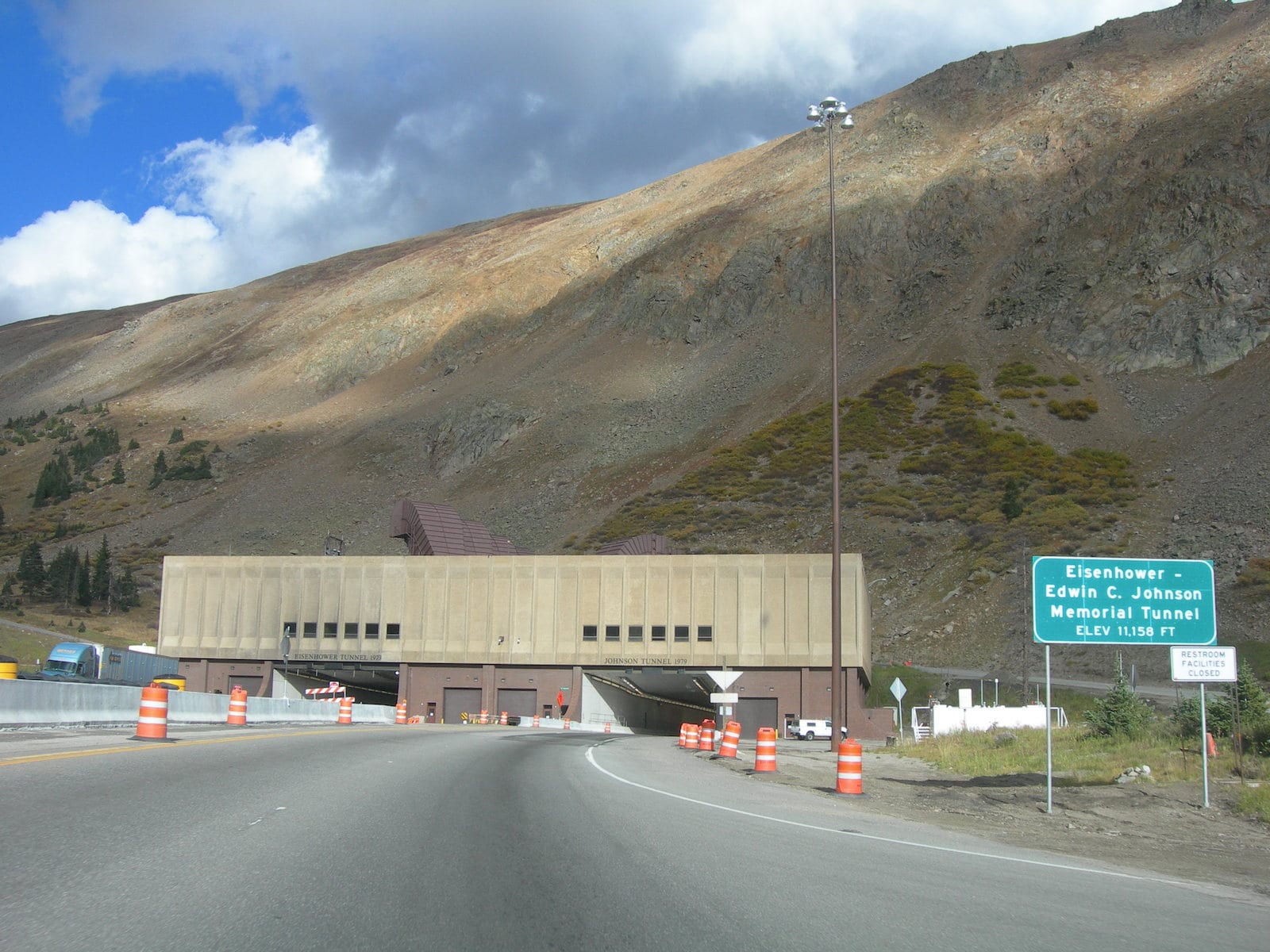
In the 1950s, Colorado advocated for a transcontinental highway across the state as part of the Interstate Highway System being built at the time. Finally, it was agreed that a tunnel should be constructed under the pass instead of building across it.
The North Tunnel took five years to build with construction ending in March 1973. The second bore was constructed between 1975 and 1979. The tunnel was originally named Straight Creek Tunnel – after the waterway running to the west of the tunnel – but later officially named the Eisenhower–Edwin C. Johnson Memorial Tunnel. Edwin C. Johnson is a former governor and senator who actively advocated for the development of an interstate highway system across Colorado.
Construction faced a number of setbacks, including delays and high costs. It was the costliest federally-funded project at the time, with a price tag of $108 million (amounting to $622 million in 2020). A fault line was discovered on the tunnel site, requiring engineers to take emergency measures to prevent cave-ins while workers were in tunnels. Unfortunately, these measures were not enough and three workers were killed during the first tube’s boring and another four during the second tube’s.
The tunnel also became entangled in the state’s feminist movement – albeit unintentionally. Janet Bonnema was recruited as an engineer, despite her supervisor thinking he was employing a man named James. He had misread her resume. When it was discovered that Bonnema was indeed a women, she was kept indoors conducting administrative work.
Many of the tunnel workers opposed women working on the site, citing a superstition that having females on site was bad luck. Bonnema, encouraged by an equality law recently passed in the State, filed a lawsuit against the Colorado Department of Transportation and won. On November 9, 1972, she entered the tunnel to work. Some workers responded by walking off the site, and one by yelling for her to leave the site. She returned days later in coveralls to continue her work as an engineer and no one even noticed she was a woman.
Getting There
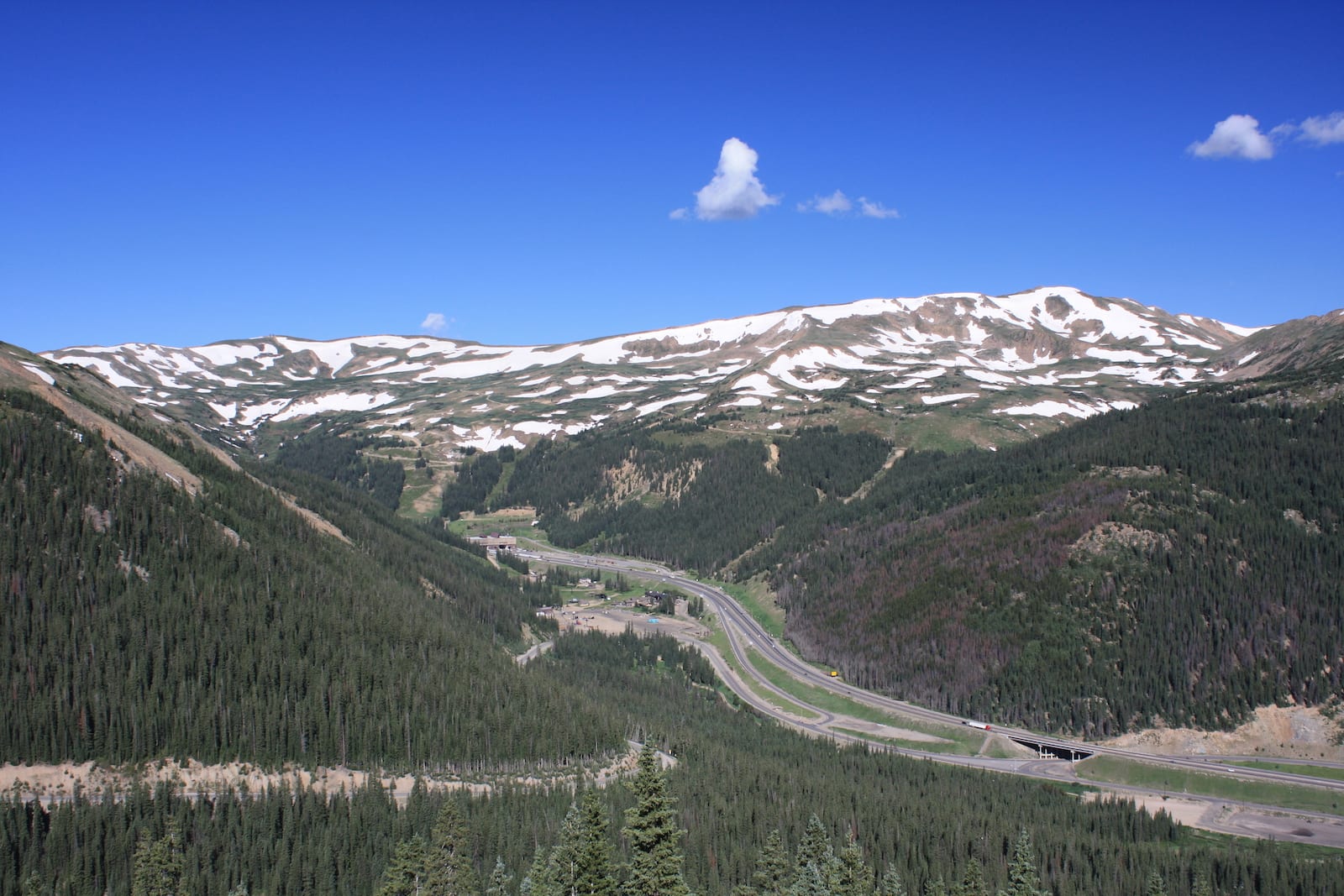
Today, the tunnel is a critical infrastructure moving people and goods between the eastern and western slopes of the Rocky Mountains. It is open year round although it closes at times due to adverse weather during the winter. Drivers should expect higher than usual traffic from January to March during ski season and in July to August during the peak tourism season.
The tunnel can be reached by heading 60 miles west on I-70 from Denver. It is about 13 miles after Georgetown, exit 228. The original route over the continental divide was Highway 6/Loveland Pass, which you can exit 216 just before the tunnel to reach the opposite side, bypassing the tunnel. This route will drive by Loveland Ski Area, which is located above and beside the tunnel. You’ll come out at Arapaho Basin Ski Area, passing Keystone and Dillon before returning to I-70 at exit 205 in Silverthorne.
For those heading east, the tunnel is nearly 40 miles from Vail and 8 miles after Silverthorne, exit 205.
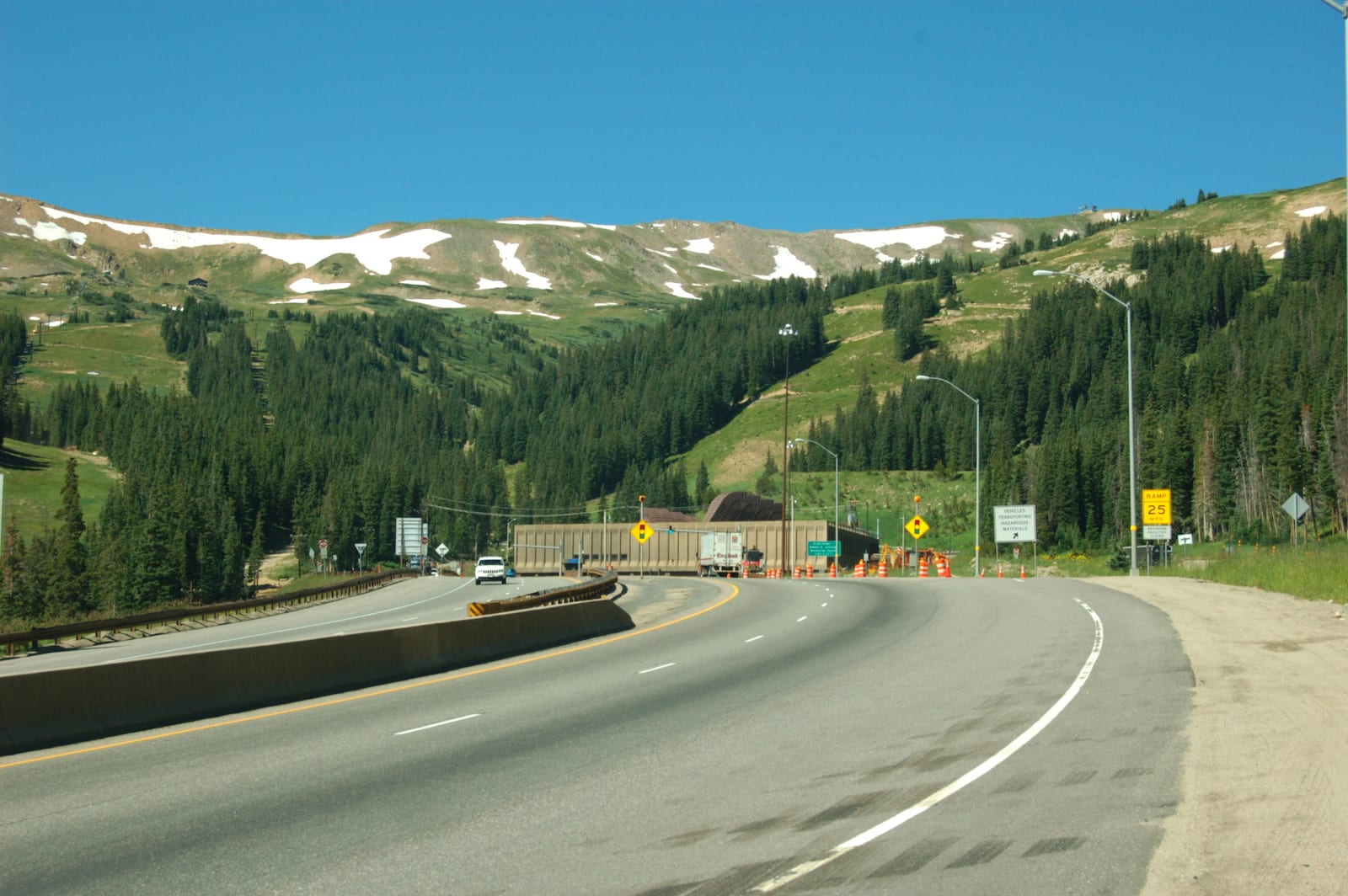
Details
Address: Interstate 70, Dillon, CO 80435
Phone: 303-759-2368
Season: Year round
Highest Elevation: 11,158 ft (3,401 m); west portal
Lowest Elevation: 11,013 ft (3,357 m); east portal
Opened 1973 Eisenhower (westbound); 1979 Johnson (eastbound)
Website: codot.gov/travel/eisenhower-tunnel
[sc name=”ad-activity-bottom”]
